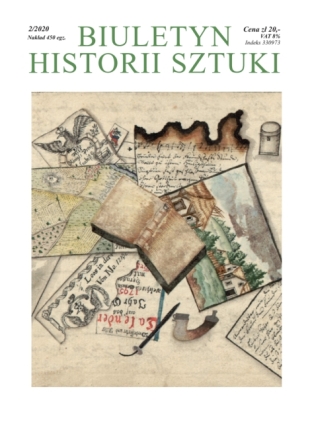„Słupogłowy kościoła Opatrzności” i inne fantazmaty mitologii rodu Skórzewskich wpisane w architekturę pałacu w Lubostroniu
‘Pillarheads of the Church of the Providence ’ and Other Phantasms of the Mythology of the Skorzewski Family inscribed into the Architecture of the Lubostroń Palace
Author(s): Aleksander JankowskiSubject(s): Christian Theology and Religion, Architecture, 19th Century, History of Art
Published by: Instytut Sztuki Polskiej Akademii Nauk
Keywords: palace in Lubostroń; Villa Rotonda; the Shrine of Divine Providence; Stanisław Za¬wadzki; Fryderyk Skórzewski; Marianna Skórzewska; Heliodor Skórzewski;
Summary/Abstract: The Lubostroń Palace raised in the early 1800s by Count Fryderyk Skórzewski and meant to become a new family residence, was to intrigue with untypical architecture fulfilling, first of all, a semantic function. The Palace’s designer Stanisław Zawadzki made reference to the Palladian central model of a cupola villa, typical of cozy residential architecture at the turn of the century. The programme was modified after the Duchy of Warsaw had been established, and Count Skórzewski had become President of the Duchy’s Bydgoszcz Department. The architectural decoration was enriched with additional patriotic content exposing the merits of Fryderyk’s mother Marianna Skórzewska for the Polish-Lithuanian Commonwealth. When the residence was taken over by Fryderyk’s sons, the Palace’s architecture was given a new symbolic meaning. Although the building’s structure remained unaltered, there appeared information that the portico columns had originally been meant for the Church of Divine Providence in Warsaw, while the tympanum of the garden pseudo-portico featured the emblem of the French. The source of this interpretation was found in the description of the Palace released in 1836 in the Greater Poland ‘Przyjaciel Ludu’ periodical, later repeated in the French magazine published by Leonard Chodźko. These pieces of information penetrated into contemporary academic literature as an archivally recorded ‘actual state’, and not an intentionally created idea. It is the demystification of this and others phantasms placed upon the Lubostroń Palace in the 19th century that is the main focus of the paper.
Journal: Biuletyn Historii Sztuki
- Issue Year: 82/2020
- Issue No: 2
- Page Range: 275-299
- Page Count: 26
- Language: Polish

